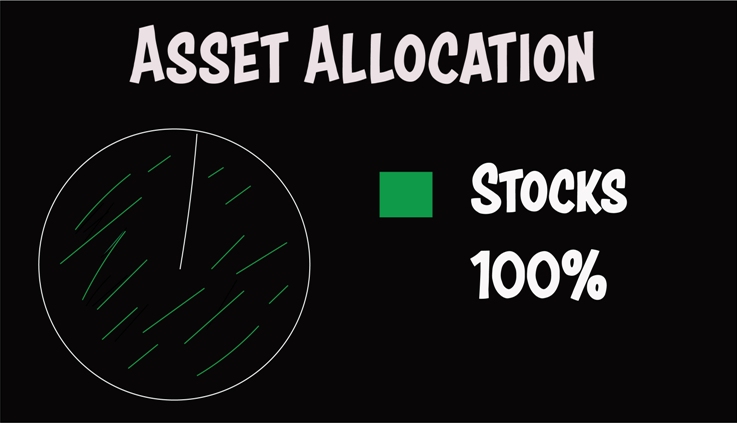It drives me crazy. Target date funds and the conventional wisdom that an investor has to reduce his stake in stocks and increase the allocation of bonds, as the investor ages.
First of all, it’s dumb to talk in terms of percentages instead of absolute amounts. 2% on $100,000 is a lot different than 2% of $10 million dollars.
I wouldn’t be able to live on 2% of $100,000 ($2,000), while 2% of $10 million dollars can provide a comfortable living ($200,000)
But, going back to the percentage of stocks vs bonds asset allocation conversation. Here is the rate of return of the S&P 500 for the past 12 years:
2009 +26%
2010 +15%
2011 +2%
2012 +16%
2013 +32%
2014 +14%
2015 +1%
2016 +12%
2017 +22%
2018 -4%
2019 +31%
2020 +18%
2021 +29%
Anyone giving up these gains for the illusion of extra safety is a bit nut.
If we examine the market data from the last 80-plus years, we can easily conclude that retirees can safely withdraw more money each year than those who have bonds in their portfolio, and they can leave a bigger inheritance to their heirs.
It’s quite clear: the more stocks, the better. Investing entirely in equities allows for a high safe spending rate for 30 years or more.
Buying bonds is for old fogies out of touch with the times
In the long run, stocks are safer than bonds.
Various rules of thumb dictate that investors should reduce risk in their portfolios as they near retirement by increasing their exposure to bonds and decreasing their exposure to stocks.
For example, the 60/40 rule suggests a retiree’s portfolio should be 60% equities and 40% fixed-income securities. According to the rule of 110, another popular asset allocation guideline, a person’s equity exposure can be calculated by subtracting their age from 110. The resulting figure dictates how much of a portfolio is invested in stocks versus bonds. For instance, a 65-year-old following the rule of 110 would invest 45% of their portfolio in equities and keep the remaining 55% in bonds.
Because preserving spending power is often more important for retirees than actively growing their portfolios, bonds tend to play a significant role in many retirement strategies. Stocks, on the other hand, can be more volatile and less attractive to retirees.
Why Stocks Are Preferred
It’s against conventional wisdom, but equity-dominated portfolios are better options than conservative portfolios heavily weighted in bonds.
Using historical data, we can analyze safe withdrawal rates of three different asset allocations – a conservative portfolio, a moderate portfolio, and an aggressive portfolio – across 30-year rolling periods between 1930 and 2019.
While the conservative option comprised 90% bonds and 10% cash, the aggressive portfolio was invested entirely in stocks. The moderate portfolio, meanwhile, held 50% stocks, 40% bonds, and 10% cash.
By conducting 1,000 simulations for each asset allocation, I found that the aggressive and moderate options supported higher safe withdrawal rates than the conservative portfolio. The stock portfolio has a safe withdrawal rate as the highest amount that can be removed for all 30 years of the simulations without depleting the portfolio in at least 90% of the simulations.
In other words, despite containing more risk associated with equities, the aggressive and moderate portfolios would have given retirees more safe spending power during the 30-year periods examined.
Additionally, the equity-weighted portfolio would have resulted in leftover assets after 30 years of withdrawals in each time period. On the other hand, retirees using the most conservative allocation would have run out of money during three different 30-year periods in the 20th century, according to the simulations.
Bottom Line
Retirement doesn’t mean investors should rid themselves of stocks. Portfolios that contain equities can support higher safe withdrawal rates than those dominated by bonds, and result in significant surpluses even after 30 years of retirement spending. While past results don’t guarantee future performance, equities should play an even larger role in the investment portfolios of retirees.
Should the future resemble the past, the lesson will remain valid. Retirees should invest heavily in equities, most likely more than they currently do.
